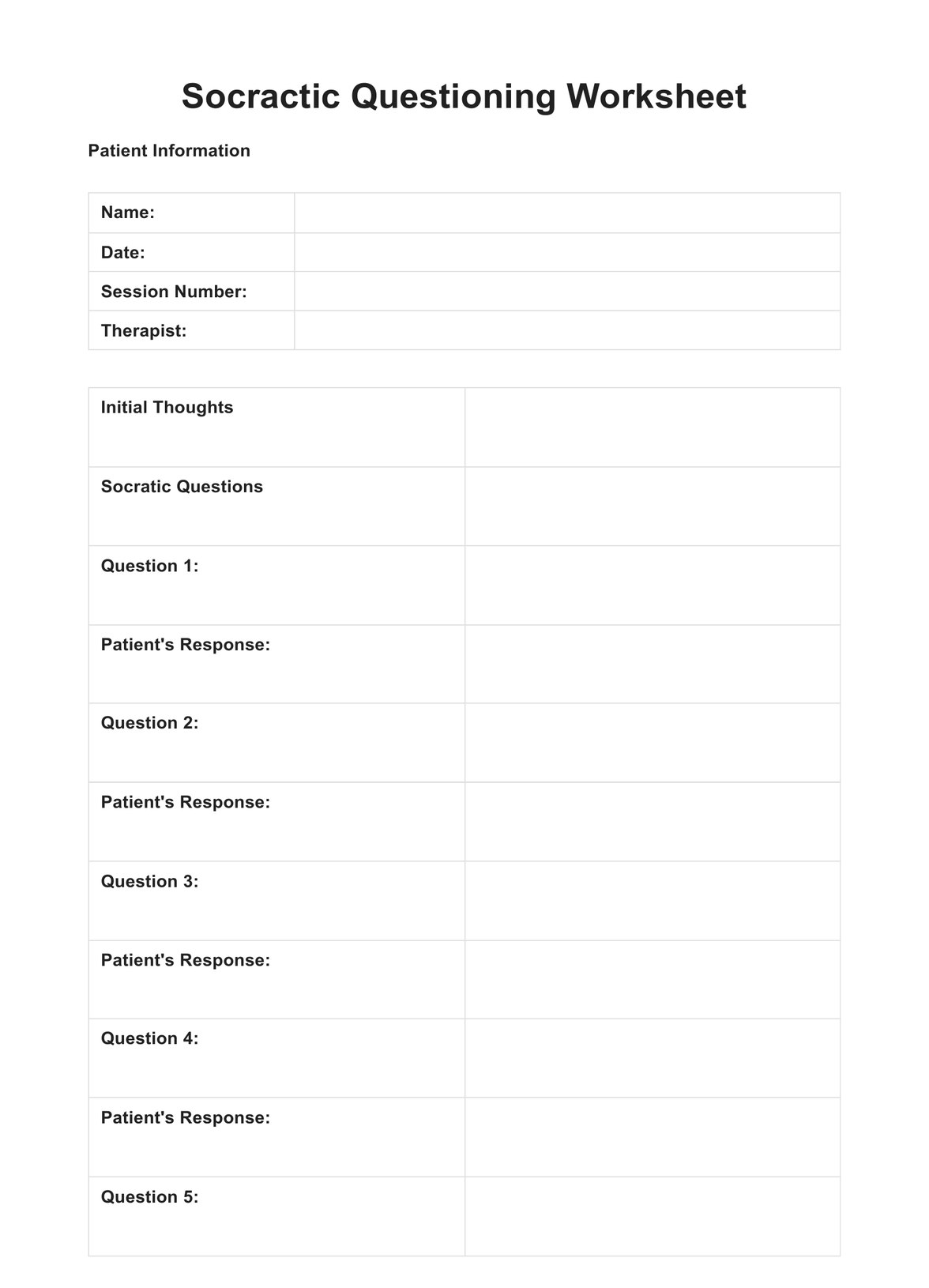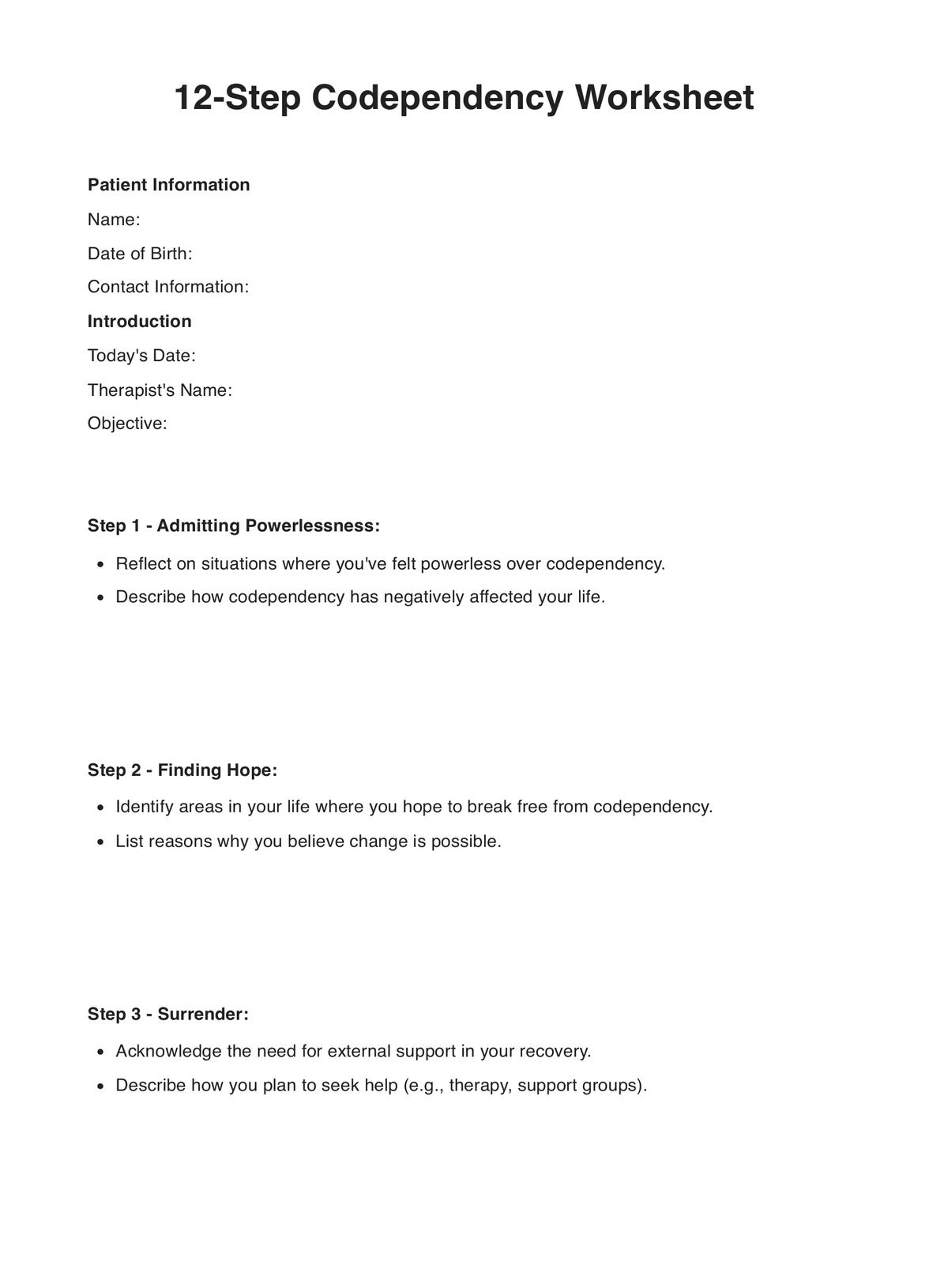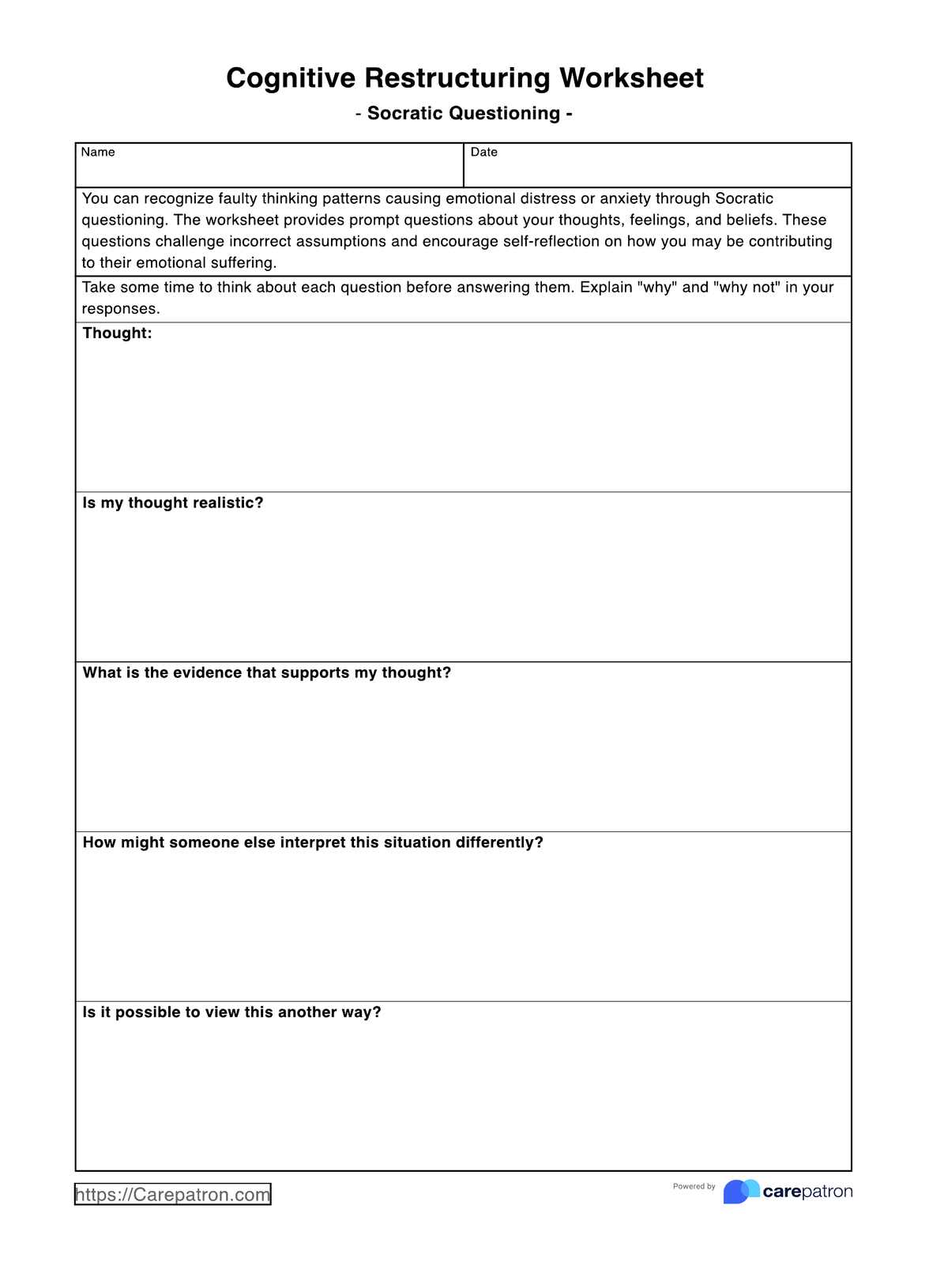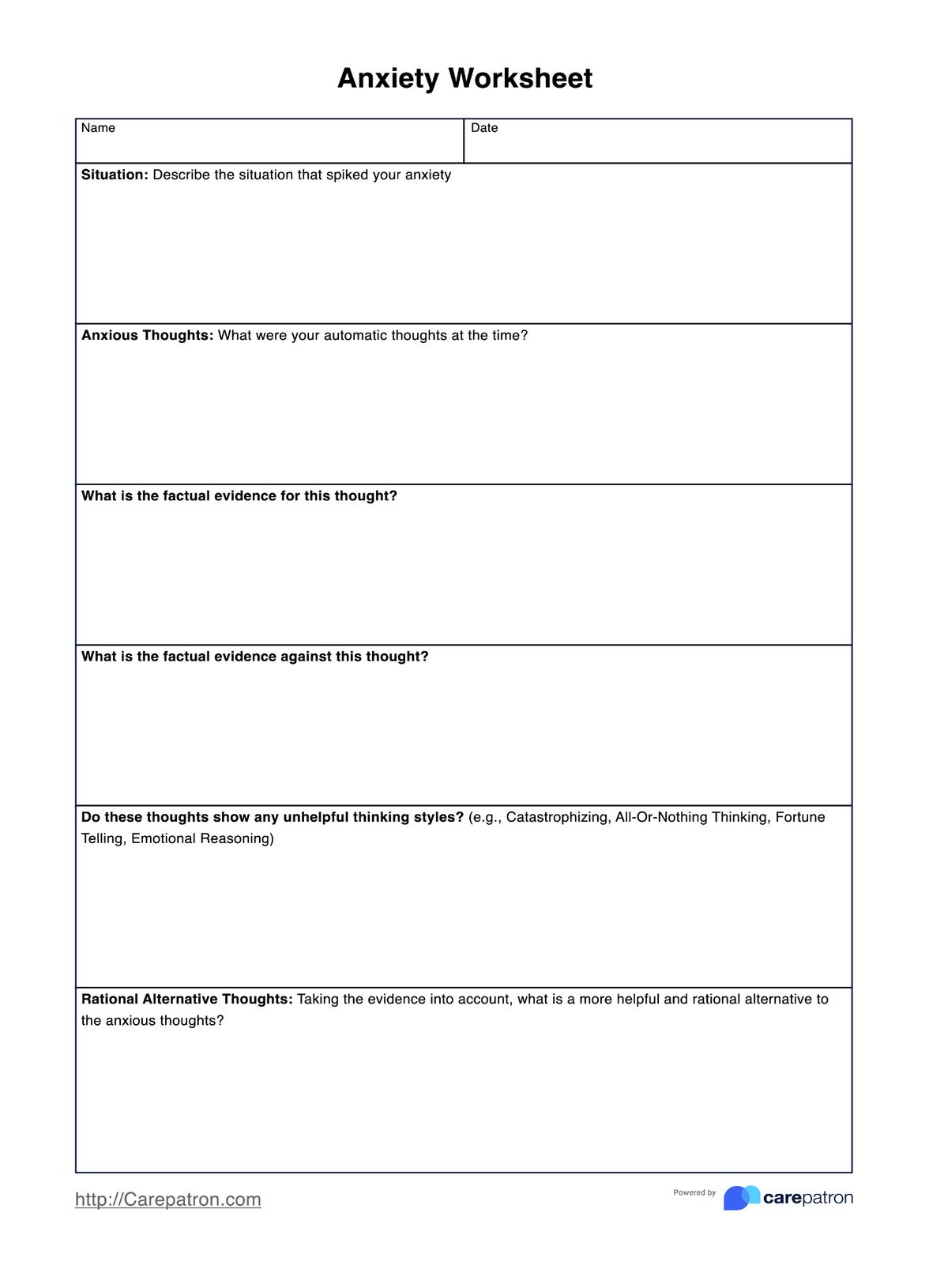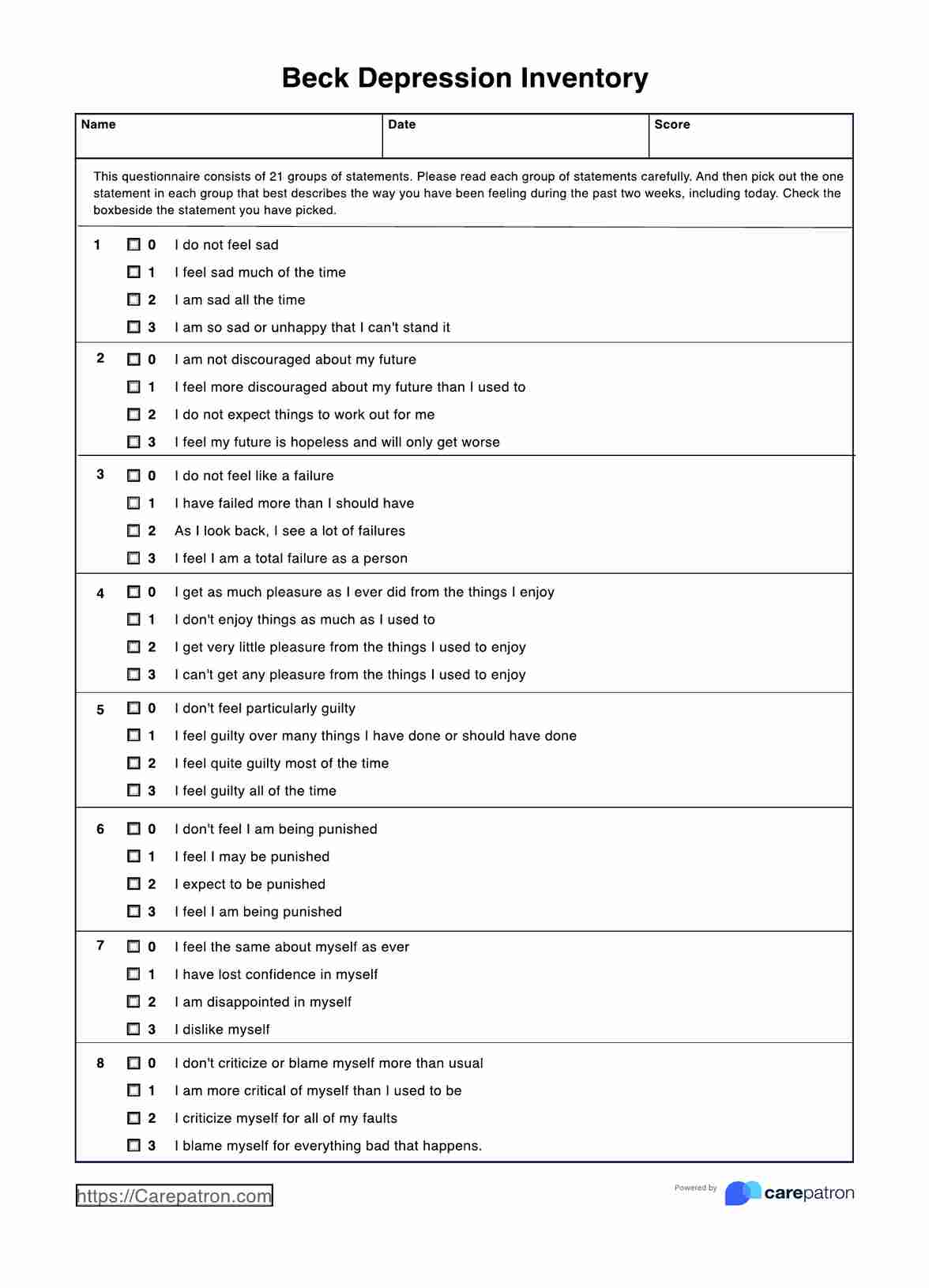Measuring Emotion Intensity DBT Worksheet
Enhance emotional awareness and regulation with the Measuring Emotion Intensity DBT Worksheet—a valuable tool for effective emotion management.


What is Dialectical Behavior Therapy?
Dialectical Behavior Therapy (DBT) is a type of psychotherapy originally developed by Dr. Marsha M. Linehan in the late 1980s. It combines cognitive-behavioral techniques with elements of mindfulness and acceptance practices to help individuals manage intense emotions, improve interpersonal relationships, and develop skills for emotional regulation. DBT was initially designed to treat individuals with borderline personality disorder (BPD). Still, its effectiveness has led to its application in various other conditions, including depression, anxiety, substance use disorders, and eating disorders.
DBT uses dialectics, balancing acceptance and change to promote personal growth. It helps individuals manage their emotions without feeling overwhelmed.
The four primary modules of DBT, collectively known as "skills training," address specific areas of concern:
- Mindfulness: This module emphasizes being present in the moment and cultivating awareness of thoughts, emotions, and sensations without judgment. Mindfulness practice helps individuals detach from negative thought patterns and observe their emotions without becoming entangled.
- Distress Tolerance: This module equips individuals with techniques to cope with intense negative emotions without resorting to destructive behaviors. These skills help individuals tolerate distressing situations and emotions without making impulsive decisions.
- Emotion Regulation: This module focuses on understanding emotions, identifying triggers, and learning strategies to modulate emotional responses. Individuals learn to differentiate between primary and secondary emotions and develop healthier responses to emotional challenges.
- Interpersonal Effectiveness: This module teaches individuals to improve communication, set boundaries, and navigate interpersonal conflicts more effectively. Skills acquired in this module enhance relationships and reduce emotional distress in interactions with others.
is delivered through individual and group sessions, creating a supportive environment for learning and practicing skills. The goal is to achieve emotional regulation, improved relationships, and effective problem-solving, leading to a balanced and fulfilling life.
Measuring Emotion Intensity DBT Worksheet Template
Measuring Emotion Intensity DBT Worksheet Example
How to use the Measuring Emotion Intensity DBT Worksheet
The Emotion Intensity DBT Worksheet helps with emotional awareness and managing emotions effectively. It's a useful tool in Dialectical Behavior Therapy. Here's how to use the Measuring Emotion Intensity DBT Worksheet:
Identify Emotions
Begin by listing the emotions you are currently experiencing. It's important to be specific and accurate in describing your emotions, such as "anger," "sadness," "anxiety," or "joy."
Intensity Scale
Create a scale to measure the intensity of each emotion. You can use a numerical scale (e.g., 1 to 10) or descriptive terms (e.g., mild, moderate, severe) to rate the intensity of each emotion.
Rate Intensity
Assign an intensity rating to each emotion you identified. Consider the physical sensations, thoughts, and behaviors associated with each emotion to determine its intensity.
Reflect
Take a moment to reflect on the factors contributing to the intensity of each emotion. Is there a specific trigger or situation that amplified the emotion's intensity?
Validation
Acknowledge your emotions without judgment. Validate that your feelings are valid responses to your experiences, even if they seem intense or challenging.
Coping Strategies
Based on the intensity of each emotion, identify appropriate coping strategies. These strategies might include mindfulness techniques, deep breathing, progressive muscle relaxation, or engaging in positive activities.
Implementation
Put your chosen coping strategies into action. Practice the techniques that resonate with you and help you regulate the intensity of your emotions.
Reassess
After implementing the coping strategies, revisit the intensity ratings for each emotion. Has the intensity decreased? Has your emotional state shifted?
Learn and Adjust
Take note of the coping strategies that were most effective in reducing emotion intensity. Use this information to refine your emotional regulation techniques in the future.
When would you use this Measuring Emotion Intensity DBT Worksheet?
Understanding and managing emotions is a fundamental aspect of maintaining emotional well-being. The Measuring Emotion Intensity DBT Worksheet is a valuable tool that can be utilized in various contexts to enhance emotional regulation skills. Here are the best and most appropriate times to use this assessment:
- During DBT Therapy Sessions: This worksheet is designed to align with Dialectical Behavior Therapy (DBT) principles. Therapists can integrate it into individual or group therapy sessions to help clients assess their emotional states, identify triggers, and develop effective coping strategies.
- Self-Reflection and Personal Growth: Individuals can use the worksheet during moments of heightened emotion or distress. It encourages self-reflection, helping individuals understand their emotional responses and providing a structured way to manage intense feelings.
- Crisis Management: In times of crisis or emotional upheaval, the worksheet can be a practical tool to navigate overwhelming emotions. It aids in breaking down the emotional experience, making it more manageable and actionable.
- Healthcare Professionals: Mental health professionals, counselors, psychologists, and therapists can incorporate the Measuring Emotion Intensity DBT Worksheet into their practice. It can be used to assess clients' emotional states, track progress over time, and tailor therapeutic interventions accordingly.
- Emotion Regulation Skill-Building: The worksheet is a valuable resource for teaching individuals emotion regulation skills. It assists in identifying patterns of emotional reactivity, promoting mindfulness, and fostering healthy coping mechanisms.
- Support for Caregivers: Caregivers and support providers can use the worksheet to better understand the emotions of those they care for, enabling them to provide appropriate support and guidance.
- Daily Wellness Practice: Incorporating this worksheet into a daily routine can help individuals develop a proactive approach to managing their emotions. It empowers individuals to engage in self-care and emotional maintenance.
What are the benefits of using this Measuring Emotion Intensity DBT Worksheet?
The free Measuring Emotion Intensity DBT Worksheet offers a range of advantages for individuals seeking to enhance their emotional regulation and well-being. Backed by research and designed in alignment with Dialectical Behavior Therapy (DBT) principles, this worksheet provides valuable insights and practical tools for managing emotions effectively.
Enhanced Emotional Awareness
Engaging with the worksheet fosters a deeper understanding of one's emotional experiences. It encourages individuals to accurately identify and label their emotions, promoting emotional awareness and intelligence.
Structured Emotion Assessment
The worksheet provides a structured framework for assessing emotion intensity. This organized approach empowers individuals to break down complex emotions into measurable components, making them easier to manage.
Improved Emotion Regulation
By guiding users through the process of rating emotion intensity and identifying triggers, the worksheet facilitates the development of effective emotion regulation strategies. This equips individuals with the skills needed to navigate intense feelings in a healthier manner.
Mindful Self-Reflection
The worksheet encourages mindfulness by prompting individuals to reflect on their emotions without judgment. This mindfulness practice aids in detaching from automatic reactions and responding to emotions with greater self-awareness.
Personalized Coping Strategies
Through the worksheet, users select coping strategies based on the intensity of their emotions. This personalized approach ensures the chosen strategies are tailored to each individual's emotional needs and preferences.
Research-Backed Efficacy
Research studies on DBT and related interventions highlight the effectiveness of emotion regulation strategies in improving psychological well-being. For instance, a study published in the "Journal of Consulting and Clinical Psychology" (Linehan et al., 2015) demonstrates the benefits of DBT in reducing emotion dysregulation and enhancing overall functioning.
Incorporating the free Measuring Emotion Intensity DBT Worksheet into therapeutic practice or personal growth endeavors can improve emotional management, greater self-awareness, and increased overall emotional well-being. It provides a structured and research-supported approach to nurturing healthier relationships with emotions and responding to them constructively.
Commonly asked questions
The time required to complete the worksheet varies depending on the individual's familiarity with the process and the depth of reflection. On average, it may take around 15-30 minutes to thoroughly engage with the assessment.
The worksheet aids individuals in understanding, assessing, and managing their emotions more effectively. It provides a structured framework to gauge emotion intensity, identify triggers, choose appropriate coping strategies, and enhance emotional regulation skills.
The worksheet is beneficial during moments of heightened emotion, therapy sessions, personal reflection, crisis management, and as a regular practice for emotional well-being.
The worksheet is useful for individuals seeking to improve their emotional regulation skills. It's suitable for those engaging in Dialectical Behavior Therapy (DBT), mental health professionals, caregivers, and anyone interested in enhancing their emotional awareness and management.


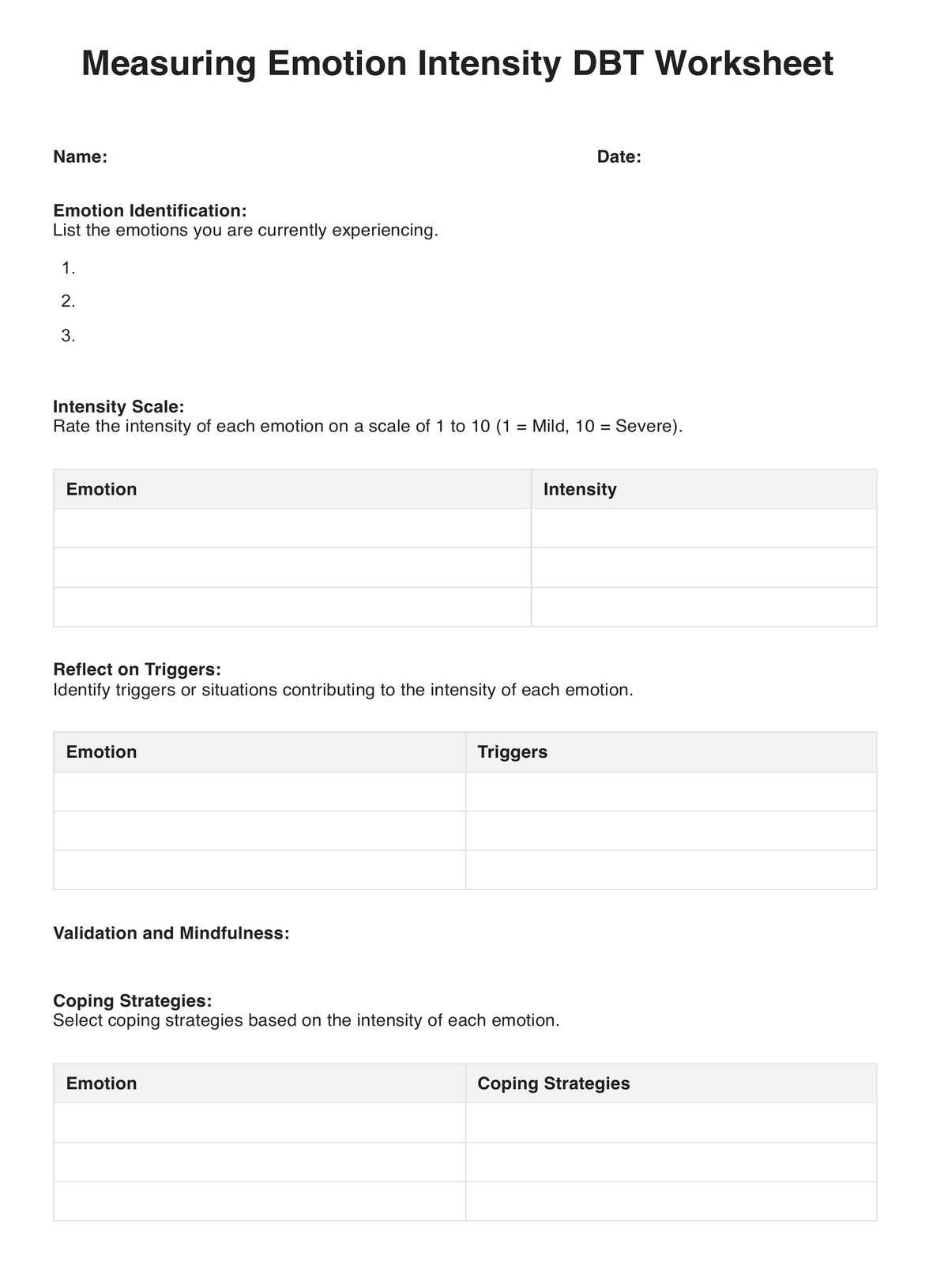
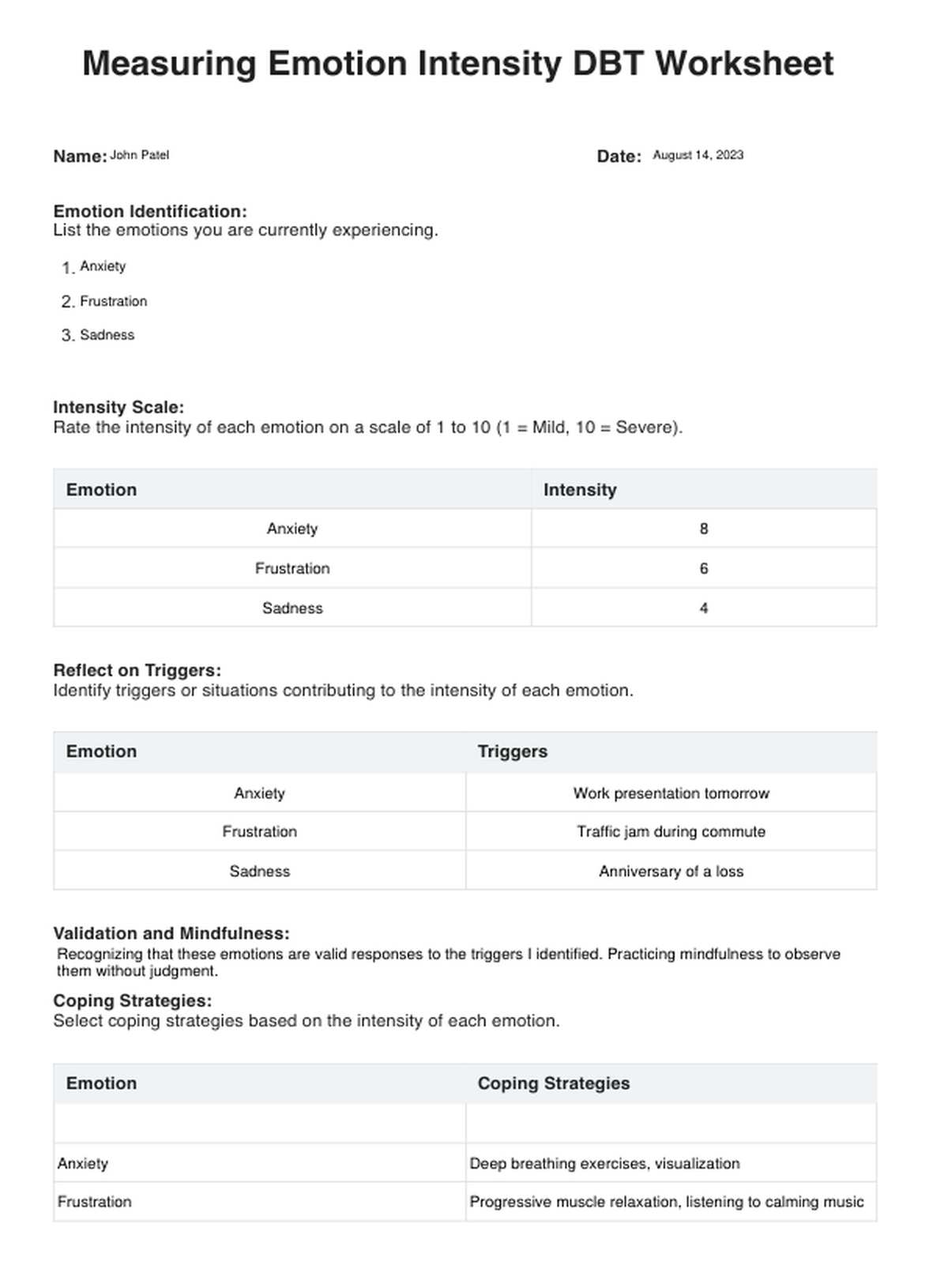















-template.jpg)



























































































